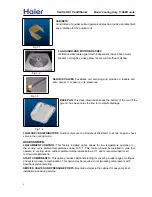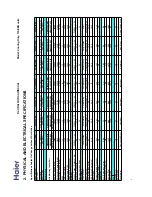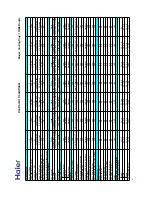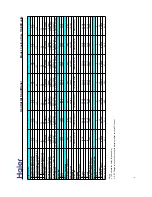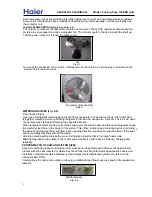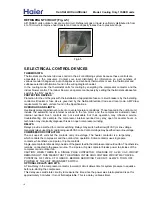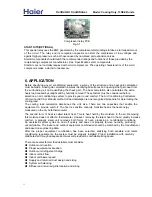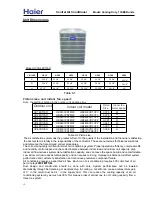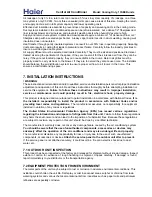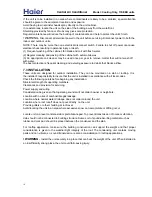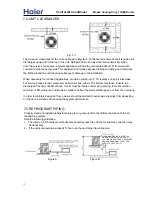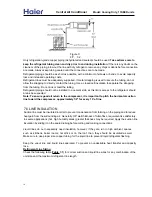
18
7.7 Charging the System
8.Pressurize the lines to 150 psi maximum with dry nitrogen. Check for leaks at all joints with liquid
detergent. If a leak is found, repair it after removing the nitrogen. Repeat the process and re-check.
Evacuation
power consumption and reduces performance. The presence of moisture in a system
leads to premature
1.Connect vacuum pump to both liquid and suction valve service ports.
discontinue evacuation, pressurize and check for leaks. Repair any leaks found and repeat the step 2.
3.Close valve to the vacuum pump and stop pump.
9.Do not purge the lines with refrigerant.
All refrigerant systems must be evacuated to a deep vacuum to remove all noncondensible gases and
moisture prior to charging the system. Air in a system increases condensing pressure,
which increases
failure. Proper evacuation assures a dry, uncontaminated system.
Recommended Evacuation Procedure
:
2.Evacuate the interconnecting tubing and indoor coil to a level of 500 microns or less or for a minimum of 30
minutes. Close the valve to the vacuum pump and wait 15 minutes. The vacuum should not rise above 800
microns. If unable to obtain 500 microns, or vacuum rises above 800 microns after a 15 minutes period,
4.When
sure of a tight, well evacuated system, charge with refrigerant.
(For systems with capillary tube or fixed orifice metering device)
! WARNING
-
Do not vent refrigerant to the atmosphere
! It is a violation of federal law to do so. If
or recycling device.
.
1.Fully open both shutoff valves.
2.Connect service gage manifold to the valve service ports, being sure to evacuate lines.
3.Startup the system. Run system at least 10 minutes to allow pressure to stabilize.
between thermometer and line. Wrap thermometer with insulating material to assure accurate reading.
for proper system superheat. Add charge to lower superheat. Remove charge to
raise superheat. Carefully remove g
u
age.
Before checking the system charge, make sure that the outdoor unit and indoor coil are an approved
match system.
For best result, t
he indoor conditions should be within 2 F of the desired
comfort conditions.
the refrigerant needs to be removed from a system to correct the system charge, always use a recovery
4.Temporarily install a thermometer on
the vapor
line near outdoor unit. Be sure of good contact
! WARNING
-
Service refrigerant carefully, high pressure are present.
5.Refer to
Table 7-2
Central Air Conditioner
Model: Cooling Only,
13
SEER
units

